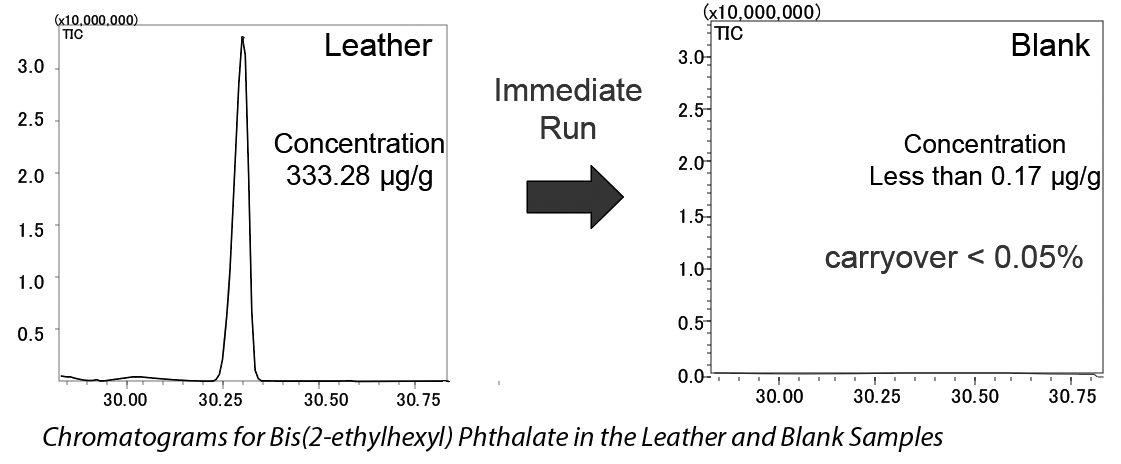In this study, Shimadzu's TD-30 thermal desorption system is used to address the issues of carryover when analyzing samples with highly concentrated SVOC content from automotive interior materials in accordance with VDA278.
 The German Automobile Association method established the VDA 278 method for the analysis of volatile organic compounds (VOC) and semi-volatile organic compounds (SVOC) produced from automotive interior materials. The method uses thermal desorption analysis that enables rapid identification and quantification of volatile compounds. However, due to direct loading, this method is often complicated by carryover issues when analyzing samples with highly concentrated SVOC content. To address this concern, Shimadzu’s TD-30 thermal desorption system features an inert sample line that is designed as short as possible and allows heating up to 300 °C, hence reducing SVOC carryover.
The German Automobile Association method established the VDA 278 method for the analysis of volatile organic compounds (VOC) and semi-volatile organic compounds (SVOC) produced from automotive interior materials. The method uses thermal desorption analysis that enables rapid identification and quantification of volatile compounds. However, due to direct loading, this method is often complicated by carryover issues when analyzing samples with highly concentrated SVOC content. To address this concern, Shimadzu’s TD-30 thermal desorption system features an inert sample line that is designed as short as possible and allows heating up to 300 °C, hence reducing SVOC carryover.
The results of these unique features were demonstrated in this datasheet. Using the GCMS-QP2020, approximately 30 mg of thinly sliced automotive interior material were analyzed. To assess carryover effects, a blank sample was analyzed immediately after the analysis of a heated leather sample, and the results showed less than 0.05% carryover (0.17 µg/g to 333.28 µg/g). Additionally, the system also exhibited favorable recovery rates, when 4 µL of VOCs standard (0.11 µg/µL) was analyzed.

